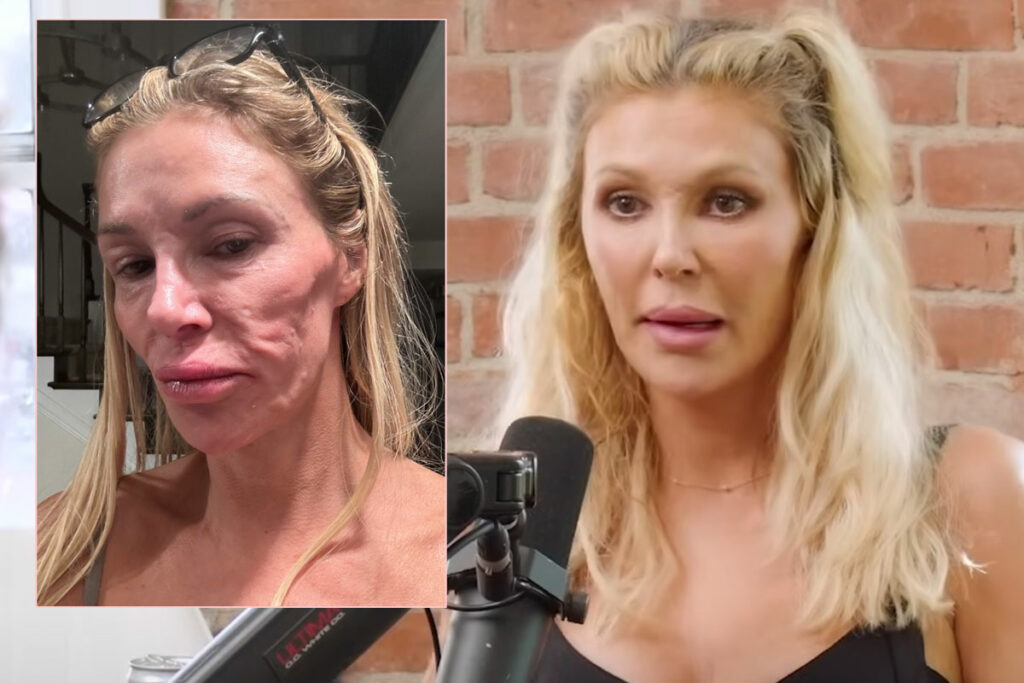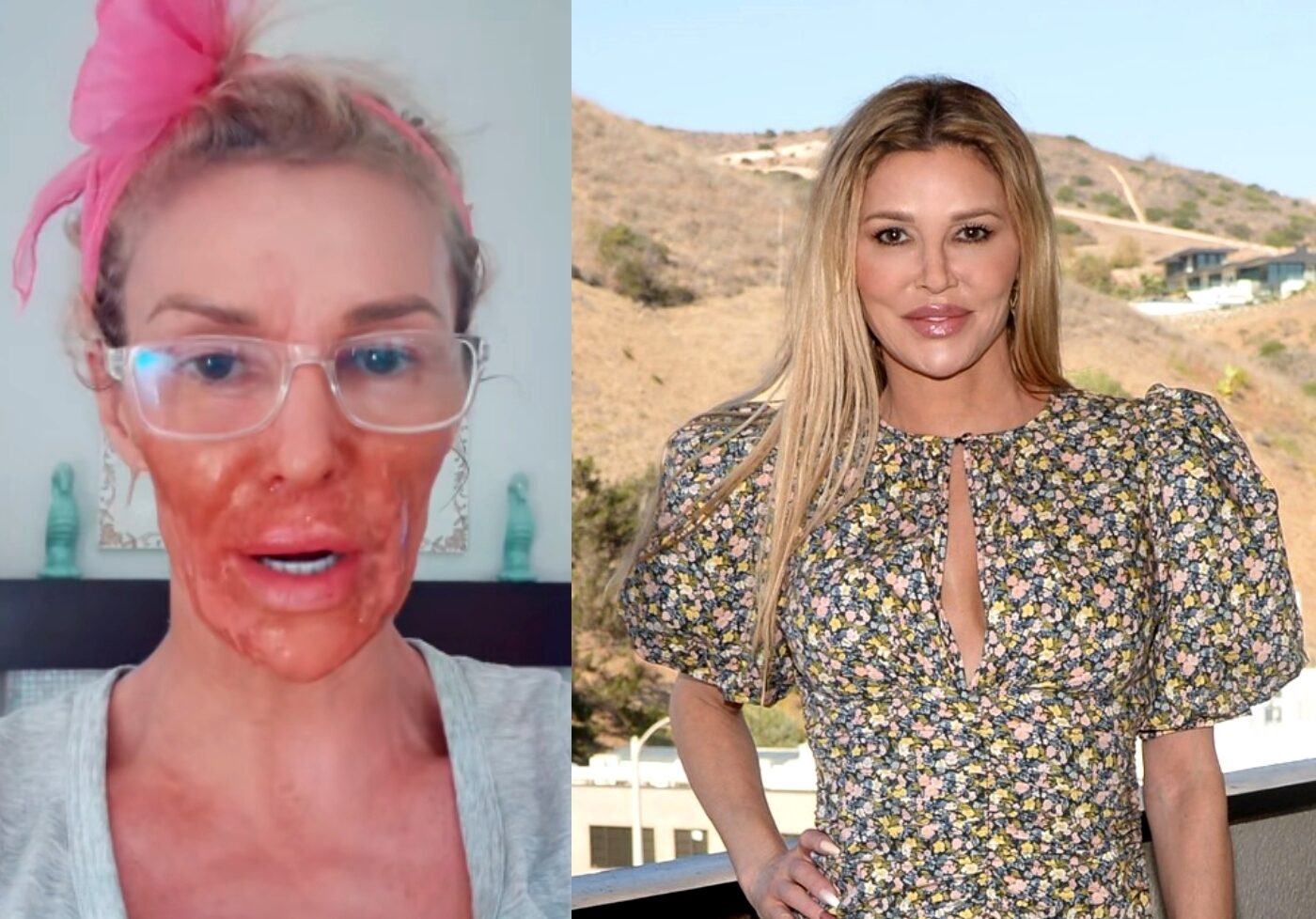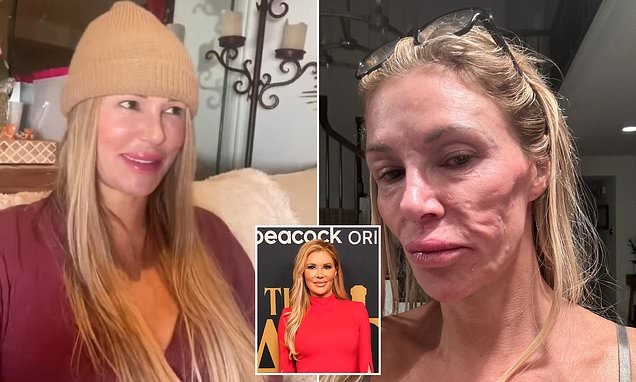Brandi Glanville, television personality and former Real Housewives of Beverly Hills star, recently revealed that she suffered significant facial burns following a skincare incident involving an at-home product. The news has sparked public concern and prompted broader discussions about the safety of do-it-yourself (DIY) skincare treatments and the importance of consulting professionals before applying any chemical-based products to the face.
What Happened?
According to information shared by Brandi Glanville herself on social media and confirmed by follow-up reports in entertainment outlets including Page Six, the 51-year-old experienced chemical burns after applying Nair, a depilatory hair removal cream, to her face.
While the specific motivation behind her decision to use the product on her face remains private, Glanville stated that she was attempting to address a personal skin concern. Unfortunately, the outcome resulted in serious irritation and visible skin damage.
She has since been seeking medical care and has openly discussed her recovery journey with her followers online. The incident quickly gained attention from both fans and dermatology experts, who weighed in on the risks associated with using chemical hair removers outside of their intended purposes.
Understanding Nair and Chemical Hair Removal Products
Nair is a widely available depilatory cream designed to remove unwanted body hair by breaking down the protein structure of the hair, allowing it to be wiped away easily. While effective for certain areas of the body—such as legs or arms—Nair is not recommended for facial use unless specifically labeled for that purpose.
According to the product’s packaging and safety instructions, depilatory creams can cause chemical burns, irritation, or allergic reactions, especially when used on sensitive or thin skin areas such as the face. Dermatologists caution against applying body hair removal creams to the face due to the higher risk of adverse skin reactions, including redness, blistering, swelling, or long-term damage to the skin barrier.
Medical Perspective: What Are Chemical Burns?
A chemical burn occurs when skin comes into contact with an irritant or corrosive substance that damages tissue. These types of burns can range in severity from mild redness to more extensive injury that may require medical treatment.
In Brandi Glanville’s case, photographs she shared on social media show inflamed and discolored areas of the face, consistent with superficial chemical burns. These injuries can be painful and may lead to peeling, scabbing, or scarring if not treated properly.
Experts emphasize the importance of seeking immediate medical advice when experiencing any unexpected skin reaction to cosmetic or skincare products.

Brandi’s Transparency and Online Response
Brandi Glanville has been open about her experience, posting updates and images of her healing process online. Her transparency has prompted an outpouring of support from fans and followers, many of whom have shared their own stories of accidental reactions to skincare products.
Her decision to share the incident publicly has also brought renewed awareness to the potential risks associated with at-home beauty treatments, especially those involving chemicals not designed for facial use.
Though many people experiment with DIY skincare solutions, Glanville’s situation is a reminder that even over-the-counter products can cause harm if used incorrectly.
Expert Recommendations: Avoiding Similar Incidents
Leading dermatologists and skincare professionals emphasize the following safety guidelines for anyone considering at-home treatments:
1. Always Read the Label
Products like Nair are labeled with specific instructions and warnings. If the label says “not for use on the face,” it should not be used in that area under any circumstances.
2. Perform a Patch Test
Before applying any new skincare or hair removal product to a large area, it is essential to test it on a small patch of skin (usually on the forearm) to ensure there is no allergic reaction or sensitivity.
3. Consult a Dermatologist
If you’re experiencing skin issues such as irritation, breakouts, or unusual skin conditions, professional advice from a licensed dermatologist is the safest route.
4. Use Products Specifically Formulated for the Face
Facial skin is more delicate than the skin on other parts of the body. Only use products that are designed and tested for facial application, especially when dealing with exfoliants, chemical peels, or depilatories.

Social Media and the Influence of DIY Skincare
In recent years, platforms like TikTok, Instagram, and YouTube have popularized countless DIY skincare trends, many of which lack scientific backing or professional endorsement. While some natural remedies and home treatments can be effective when used appropriately, others may carry unexpected risks, particularly when they involve acids, chemical compounds, or off-label use.
Brandi Glanville’s incident has added to the ongoing conversation about the need for increased awareness and digital responsibility when it comes to beauty advice online. Experts advise viewers to treat all viral skincare hacks with caution and verify claims through trusted sources.
Recovery and Moving Forward
Brandi Glanville has shared that she is receiving appropriate medical care and is focusing on healing. While chemical burns can be distressing, many cases heal fully with the right skincare regimen, including prescription creams, moisturizing agents, and sun protection.
Skin experts often recommend avoiding sun exposure, keeping the affected area clean and hydrated, and refraining from using harsh products during recovery. The skin’s natural healing process can take anywhere from several days to a few weeks, depending on the severity of the injury.

Empowering Safer Skincare Choices
Brandi’s experience serves as a cautionary tale and a learning opportunity for many who may consider trying off-label skincare solutions at home. Whether addressing a cosmetic concern or simply experimenting with new treatments, the best course of action is one grounded in research, professional guidance, and product safety.
Consumers are encouraged to check ingredient lists, consult reviews from credible dermatology organizations, and when in doubt, seek expert opinions before beginning a new skincare routine.
Final Thoughts
Brandi Glanville’s recent injury is an unfortunate reminder that not all beauty treatments are safe to do at home, particularly when using products in unintended ways. Her openness about her experience has helped bring awareness to skincare safety and has encouraged others to think twice before experimenting with powerful cosmetic products.

